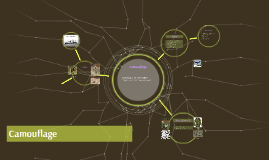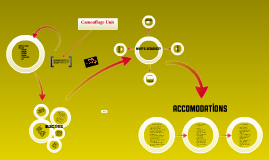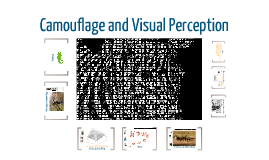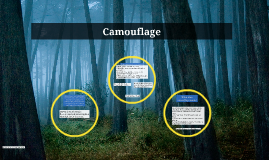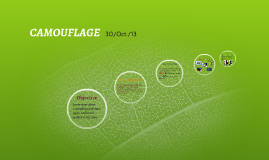Camouflage
Transcript: In this 2nd Grade unit, the students will learn all about camouflage. For two weeks, they will engage in fun activities that pertain to all different kinds of animals who learn to blend into their environment. They will learn new vocabulary pertaining to the topic. They will also have the chance to be creative based on what they learned throughout the unit. Objectives 1 The students will watch the introductory video (Leopard stealth) and through group discussion, find 3 key points about the leopard in the video to type a short Power Point summary. 2 As a class, students will watch a portion of “Kings of Camouflage” and discuss what they observed the cuttlefish do, taking notes of all the key points the teacher mentions (which will also be displayed on the whiteboard). The students will then get into pairs to use Microsoft Word to create a Venn Diagram that compare and contrast the animals listing at least four differences and one similarity between the animals in regards to their environment and food source. 3 After the teacher has read 3-D Close Up: Animal Camouflage, the students will search online in groups for different kinds of camouflaged animals through child-friendly sites. The students will individually create “Inspiration” maps based on 2 different camouflage animals they choose and include 2 descriptions of each (one of their habitat and one of how they camouflage). 4 Individually, the students will create a camouflaged animal of their own on Kidpix using the lesson vocabulary to 1) describe what kind of animal it is, 2) how it camouflages, and 3) what kind of environment it lives in. 5 Individually, students will create a habitat that corresponds to the animals that they had previously created with KidPix and should include 2 things- food source, shelter/hiding place. What's Required? Materials Hardware Computers Printers DVD/VCR Resources Print outs coloring pages word puzzles student work 3-D Close Up: Animal Camouflage by Daniel Gilpin Software Microsoft Word Microsft PowerPoint Mozilla FireFox Inspiration KidPix Accomodations Resource Students Be aware of students IEP when teaching lesson Allow for more visual/ hands on material for student Allow for more time for completion Allow for other students to act as peer assistants OR allow for outside helpers/volunteers to come in for assistance Follow the students strong suits and incorporate them in the lesson English Language Learners (ELL) Provide vocabulary lists in English and Spanish if needed Provide extra time to complete assignments Provide after school tutoring lab Partner up with a peer assistant (try a bilingual student first) Gifted Students Provide material (coloring pages, puzzles, etc) that will expand their level of thinking Allow for them to act as peer assistants for students who need extra help Provide resources for more in depth research on an idea related to the lesson topic THE END miscellaneous craft material: pipe cleaners ribbons glitter sand/sandpaper cotton balls, etc Sheets of Plastic Material Subject Areas Include: English Reading Writing Science Technology Art Camouflage Unit notebook paper pencils glue markers/crayons construction paper child scissors cardboard boxes poster board whiteboard and dry-erase markers.






